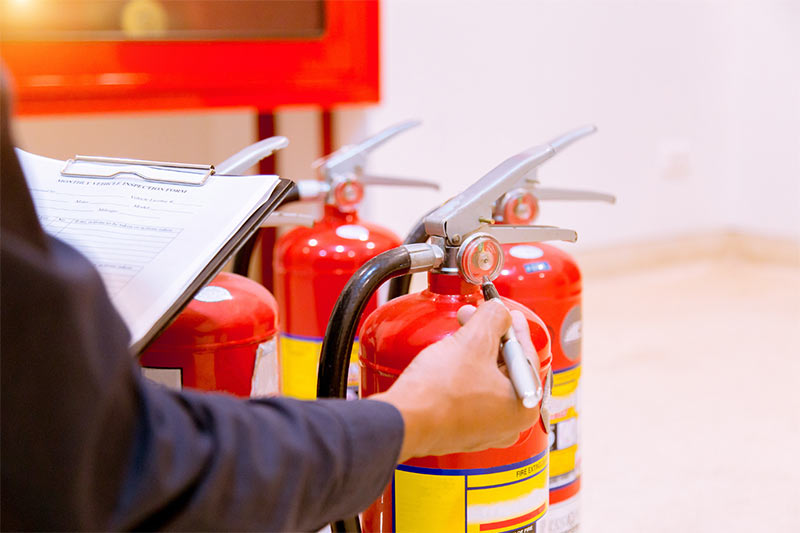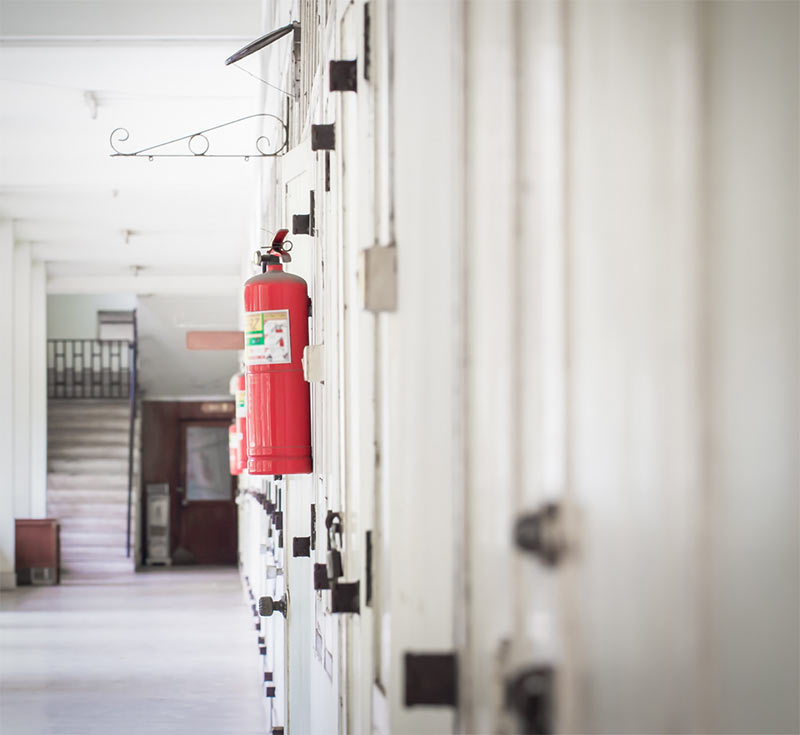For any employer, ensuring the safety of their employees is paramount, and this includes fire safety. Apart from being a legal requirement, implementing fire protection systems and procedures also protects your building.
The loss of lives, as well as the damage to property and its contents, can be devastating. However, the risk can be minimised by making sure you have fire safety systems in place that not only meet but exceed the mandatory safety regulations and standards in the UK. Part of this is to have the right fire safety equipment and signage in place.

The Regulatory Reform (Fire Safety) Order 2005
In 2020/21 alone, the Fire and Rescue Service recorded nearly 12,000 fire-related incidents in non-residential premises. Sadly, there were also 14 fatal casualties and 743 injuries. Whilst this was a drop in previous years, possibly due to more people working from home, 2021/22 figures are showing an increase of 4% as more people return to the workplace.
Unfortunately, there are more than ten fatalities in the workplace every year which highlights how important fire safety in the workplace really is.
In 2005, the government introduced the Regulatory Reform (Fire Safety) Order, making it a legal requirement for all business owners to provide their employees with relevant fire safety training.
The Order is designed to ensure that all staff within a workplace are aware of the dangers of fire and are fully prepared should a fire emergency occur. It also made it mandatory for any employer to arrange for a Responsible Person to be 'held accountable for the safety of the employees and anyone else on the premises at the time'. That person is either:
- The employer
- The owner
- The landlord
- The occupier
- Anyone that has control of the premises, such as the building or facilities manager, a managing agent or a risk assessor
This also includes owners of B&B's or those who let out a self-catering property. The Order states that the Responsible Person must:
- Conduct a fire risk assessment that is regularly reviewed.
- Identify and communicate any fire risks and define 'at risk persons', such as the disabled, blind or deaf people. This must be recorded if there are more than five at-risk persons.
- Draw up fire safety measures that pertain to the identified risks in order to protect employees, including fire safety and evacuation plans.
- Make sure that all employees know and understand these measures through training and fire drills.
- Ensure the necessary and relevant fire safety equipment is in place.
Let's look at each of these responsibilities in more detail.
Fire risk assessments
As the Responsible Person, not only should you conduct a risk assessment, but it should be reviewed and updated on a regular basis. Each assessment must be recorded if there are more than five employees.
The aim of the risk assessment is to:
- Identify the potential fire hazards
- Identify people at risk in the workplace
- Evaluate, remove and/or reduce the fire risks
- Record your assessment findings
- Prepare an emergency plan, including practice drills
- Provide the right fire safety training for all employees
- Review and update the fire risk assessment regularly
In conducting the fire risk assessment, there are a number of areas that you will need to consider, including:
- Fire emergency routes and exits
- Fire detection and warning systems
- Firefighting equipment
- The storage and/or removal of dangerous substances
- A fire emergency evacuation plan
- How to look after at-risk (vulnerable) people in a fire emergency
- Provide employees and other people on the premises with information about your fire safety measures
- Ensure all employees have received fire safety training
Fire safety evacuation plans
The Responsible Person must ensure that comprehensive fire safety evacuation plans are not only in place but have been communicated to all employees. These must also take into consideration the needs of people that may have mobility issues, such as wheelchair users. Your plan will need to include the following:
- Clear escape routes that are as direct and short as possible and are clearly marked
- Sufficient routes and exits so every employee can escape a fire
- Emergency doors that can be easily opened
- Emergency lighting
- A safe meeting point for employees that is far enough away from the building to avoid any danger
- Fire safety training for all employees, including knowing and using all the escape routes and how to use fire safety equipment

Fire safety equipment
The type and level of fire safety/fighting equipment needed will largely depend on the size of the business, the premises and the number of employees. It must also include sufficient fire detection and warning systems, such as smoke detectors and fire alarms.
Firefighting and fire safety equipment may include:
All equipment must be maintained and regularly tested to ensure they are in full working order at all times. This includes fire alarm systems, emergency lighting, fire exit lights and automatic fire doors.
Fire safety training and drills
All employees must receive fire safety training at least once a year, and any new staff that have joined must complete an induction which includes this training. In addition, it's a requirement of the Order that a fire safety drill is carried out yearly as a minimum, if not more frequently. The outcome of the fire drills should also be recorded as part of the fire safety and evacuation plan. If any areas are revealed where fire safety measures need to be improved, these must also be recorded and rectified.
At ESE Direct, we have a wide variety of fire safety signage that will ensure your workplace is the safest it can be and that all employees are protected. This includes our no smoking signs, notifying employees that they can't use lifts but must use the stairs, and our 'Know Your Extinguisher' colour code sign. We are experts in providing a wide range of products for businesses.